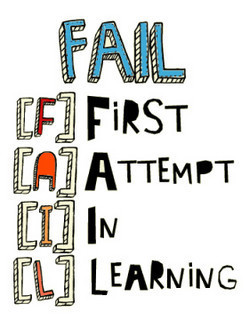Mary E. Marshall's Blog, page 42
February 25, 2014
Intentional Culture – What is Yours?
 I was giving a talk the other day at S.U.R.F Incubator in Seattle for startups and got an interesting question – what the heck is “intentional culture?” I asked several follow-up questions about the questioner’s background. He was on his third start-up. The other two had gone well, but he had never given any thought to “culture.” He assumed, as many of us do, that his values and views were shared by all and that was the culture of his organization. He said he had one rule – that when developing, if someone ran into a roadblock or made a mistake, it had to be identified immediately, and if not, that person was fired. So I probed a little more. He believed that projects are a collaborative effort, and those who did not want to collaborate should not work there, and no one should be afraid to speak up and ask for help or admit a mistake. He said that turnover was approximately 50%.
I was giving a talk the other day at S.U.R.F Incubator in Seattle for startups and got an interesting question – what the heck is “intentional culture?” I asked several follow-up questions about the questioner’s background. He was on his third start-up. The other two had gone well, but he had never given any thought to “culture.” He assumed, as many of us do, that his values and views were shared by all and that was the culture of his organization. He said he had one rule – that when developing, if someone ran into a roadblock or made a mistake, it had to be identified immediately, and if not, that person was fired. So I probed a little more. He believed that projects are a collaborative effort, and those who did not want to collaborate should not work there, and no one should be afraid to speak up and ask for help or admit a mistake. He said that turnover was approximately 50%.
What I was able to point out to him is that he had a very intentional culture, however, it didn’t seem like he necessarily hired for this culture, nor communicated about it in any regular way. The consequence is that people were “surprised” when they got sacked because they were unaware of the rule or unstated guidelines for behavior. He wondered if his belief was too harsh or wrong. (When it comes to culture, there are not too many rights or wrongs – it just is what it is). The most important thing is that it should be a reflection of what you as the entrepreneur and leader believe – what your values are and what you want your company to become for optimum performance. You will not agree with the values and culture of every organization, and it’s not important that you do. It’s only important that you define your organization’s values and culture and communicate it effectively.
Culture is the daily demonstration of a company’s values. Culture can be the manifestation of stated values (intentional), or the unstated, but nonetheless real values, that some or all of the employees share. When values are unstated then the culture is unintentional. (From Putting Together the Entrepreneurial Puzzle – Chapter 2 Intentional Culture).
This month you will have access to a free download of Chapter 2 of Putting Together the Entrepreneurial Puzzle for the next 30 days on my website. I would encourage you to use it to examine the culture of your company and see if you really understand “what” it is. See if your values are actually being lived and if your policies and procedures are a reflection of those values. What are the three words that you think describe your culture? Now ask some of your employees what they think they are. Kudos to you if they are the same, however watch their body language when they answer. Did you see enthusiasm? Or a “yea, well, here is what we say, but not what we do” kind of look or reply. The reason culture is so important towards a company’s success is that everything else flows from this and gets easier or harder as a result. If you are having difficulty implementing a new strategy or initiative, go backwards. Take a look and see if there is cultural misalignment of some type that is causing it to fail, or perhaps the initiative is out of alignment, therefore your culture is resisting it.
You may have to make some personnel changes if things are off track. If someone strongly believes something that is counter to your values and culture, they will act as a resistor, (unconsciously or consciously), and will ensure failure until you address the issue.
All the information you need to ascertain if your culture, and therefore values, are on track is always on display. You just need to look around and observe. The key is to make sure it’s your intentional culture, not what happened while you weren’t looking.
The post Intentional Culture – What is Yours? appeared first on Mary Marshall // CEO Coach.
February 19, 2014
The Influencer and Connector Craze
 I read an interesting article in the Wall Street Journal entitled “Office Influencers are in High Demand” that talked about the efforts companies are making to engage, and dare I say “use,” those who are good connectors and in turn, good influencers. Salesforce.com has an internal platform called “Chatter” and elevated those who post and comment a lot to an elite class called “chatterati.” Let’s be clear, in every office, company or environment there are always one or two people who are great at engaging, knowing and influencing behavior, ideas and thoughts, and this is nothing new. What is new is the effort to identify and engage these people for the benefit of the company.
I read an interesting article in the Wall Street Journal entitled “Office Influencers are in High Demand” that talked about the efforts companies are making to engage, and dare I say “use,” those who are good connectors and in turn, good influencers. Salesforce.com has an internal platform called “Chatter” and elevated those who post and comment a lot to an elite class called “chatterati.” Let’s be clear, in every office, company or environment there are always one or two people who are great at engaging, knowing and influencing behavior, ideas and thoughts, and this is nothing new. What is new is the effort to identify and engage these people for the benefit of the company.
The article defines Influencer Traits as:
Outgoing: Extroverted and exuberant but also good self-monitors.
Empathetic: Approachable and able to sympathize.
Accessible: Fully present and welcoming.
Energizing: Fellow employees feel invigorated by them.
Optimistic: The focus on solutions, not what can’t work.
Just to be clear, I have no problem with doing this because it identifies a person’s “gift” or “talent” and helps them to become better at it. Essentially, it’s like placing a professional sports player in the right role and in the zone. Nirvana. What I do have a problem with is saying that all employees should do this, as some companies have done. It’s like asking a musician to become an IT specialist. One size does not fit all
And a really good influencer will only do so for good – meaning they are not going to support something or someone they don’t believe in just because they are on the payroll or told to do so. I do think it’s important to look around your company and identify those who you feel are the influencers and be aware of who their current circles include. Then you should ask yourself, how can I help them help me? What are you both aligned on or what do you need to be aligned on to help the company? What do they need help with? Leadership training? More time to help engage the team? Communication training? There will be something that they are interested in learning or doing, because it’s how they are wired. Make it a two-way street and you have a winning combination.
If you attempt to use the influencer to promote something that is not aligned with their beliefs, you will have it backfire on you very quickly. Be sure there is very clear alignment at the beginning and get out of the way and watch good things happen
The traits we are talking about are also the traits of great salespeople or account managers so perhaps you may want to promote your newly identified influencers? Another great place to have them help you is outside of the company, with PR and connecting with those you’ve been unable to get an audience with. Influencers know people and they know how to get to those they don’t know. They are like human versions of LinkedIn.
Influencers and connectors are essential in any successful business, just be sure to identify it as a talent and don’t expect everyone to be as good as the naturals – and don’t take it as a negative if someone does not have these skills as they will, (or at least should), have other important gifts and skills to contribute to the team.
photo credit: AntoineWentzler via photopin cc
The post The Influencer and Connector Craze appeared first on Mary Marshall // CEO Coach.
February 12, 2014
Fail Fast – and Start Over
 I’ve been thinking a lot lately about why some companies make it and others don’t – especially small entrepreneurial companies – and why some grow and others stay right where the started, with every day a struggle.
I’ve been thinking a lot lately about why some companies make it and others don’t – especially small entrepreneurial companies – and why some grow and others stay right where the started, with every day a struggle.
I think it has to do with speed to fail and the ability to pick yourself up, learn from the failure and start over. Great businesses morph over time into what they eventually become. One hit wonders rarely survive in the long run. One of the challenges one hit wonders face is that they often don’t know exactly what they did to make it successful in the first place, it just happened. Now the founder or team live in fear that they can’t replicate what they just did with product number two, or enhance product number one because they got lucky. Yes, luck plays a big part in business start up success. A good concept has to be at the core of the business but who you know and how you go about bringing the product to market can be a lot about being in the right place at the right time. And if you’re thinking of a start-up but don’t consider yourself a lucky person, put your money back in the bank and go back to your 9-5 job. Whether you are or are not lucky, you have to think you are otherwise, you are limiting your opportunities by your negative belief.
Ideas are a dime a dozen. I probably have 5-10 ideas for my business every day. Only a couple of them are worth spending some more time on and only a very few get to the stage that need serious consideration and investigation. A start-up should be a lot like a good product development process. Concept, research, review, test, troubleshooting, market scope, SWOT, rinse and repeat. At the early phase of a start-up, the business is a product and not really a business yet. A lot of Silicon Valley start-ups don’t even have revenue, which for most of us mortals, defines an actual viable product!
So in the “concept” phase, you need to be prepared for failure and not only expect it, relish it because ultimately, it will make the product or service better. You need to be open to other opinions, other points-of-view and incorporate those into your original idea and see what makes sense to you. Ultimately, the failures will lead you to the right product or service, or on a completely different path. The only time that failures don’t lead to something better is when there is a refusal to believe that the original idea wasn’t sound or solid, that it needed work or modification. Again, hanging on to a “belief” will keep you stuck. Open up just the possibility of “what if” and see what shakes out. This goes for the business that is stuck with flat revenue over several periods, what needs to be changed, ditched, re- examined?
As the gold miners used to say, “there’s gold in them there hills,” in the failure, there is gold, but the mining gets a little tougher so don’t give up, learn from it.
photo credit: Jeffpro57 via photopin cc
The post Fail Fast – and Start Over appeared first on Mary Marshall // CEO Coach.
February 6, 2014
Leadership – A Team Sport
 Those of us in Seattle are still celebrating the first Super Bowl win for the Seattle Seahawks and the 12th man. It was an awesome day for the team, the fans and all of us here in the Northwest. You’ve all heard the negative media stories about the team: “they are mediocre,” “Wilson is too short for a great quarterback,” “Sherman is a thug,” etc. All disproved in 3 hours of focused, driven execution of a great strategy by a great team.
Those of us in Seattle are still celebrating the first Super Bowl win for the Seattle Seahawks and the 12th man. It was an awesome day for the team, the fans and all of us here in the Northwest. You’ve all heard the negative media stories about the team: “they are mediocre,” “Wilson is too short for a great quarterback,” “Sherman is a thug,” etc. All disproved in 3 hours of focused, driven execution of a great strategy by a great team.
One of the things that strikes me most about the Seahawks is that they really are a team, meaning that although there are some real stars, everyone takes their turn. Smith winning the MVP for the Super Bowl was just one example. The team has its obvious leaders, Coach Carroll, John Schneider, Russell Wilson, the other coaches and players in positions of authority, however, every single one of the players “leads” when he has to. They were able to shut down the best offensive team in football – and it was no accident. They had a plan, they executed, and they won.
How does this apply to entrepreneurship and business? Leadership is a team sport. Yes, there is one person as the designated leader to make the ultimate decision, (because we all know how well socialism works in business), however, the great leader is able to bring out the leadership qualities in everyone on the team. He or she is able to identify the parts that the players do best and let them lead in those areas. No one minds being led when their contribution is acknowledged. When you see a great team working, it’s pure synergy. Everyone knows their role, each role is valued and mutual respect is had by all – and they win.
Think about the teams you lead or are a part of. Look at these following elements and if you don’t know the answer, ask.
Does everyone know their specific role?
Does each member of the team know the roles of the others?
Do they know what the goal or purpose is?
Do they know the timeframe to accomplish the goal?
Do they know the playbook to achieve the goal or objective?
Is everyone held accountable for their deliverables?
How are you celebrating the wins?
If the answers to these questions are murky or undefined for your team, time to take a look at the players and see who needs to be brought in and who needs to be traded. You can get extraordinary performance out of ordinary players, but the team has to be rock solid for that to happen. So start from the ground up. Gain clarity on the players and the plan, focus on the goals, and the possibilities are endless.
Just ask the Seahawks.
photo credit: deVos via photopin cc
The post Leadership – A Team Sport appeared first on Mary Marshall // CEO Coach.
January 29, 2014
The Entrepreneur in All of Us
 I just finished reading Daniel Pink’s new book, “To Sell is Human,” where he discussed the fact that we are really always selling, whether we call it that or not. He has some great tips on how to embrace selling, become better at it, and how to embrace what is really a natural state for all humans. It’s a good read.
I just finished reading Daniel Pink’s new book, “To Sell is Human,” where he discussed the fact that we are really always selling, whether we call it that or not. He has some great tips on how to embrace selling, become better at it, and how to embrace what is really a natural state for all humans. It’s a good read.
What I started thinking about as a result was that a phenomenon even larger or more primal than “selling” is the entrepreneurial spirit in all of us. Let’s face it, somewhere deep inside even the most cautious or introverted person, an entrepreneur is just waiting for a chance to come out. If we accept Pink’s premise that to sell is human, it is still something we “do.” Entrepreneurship is something we are. America was and is built on the backs of hard working entrepreneurs.
Currently 99.7% of all employer firms are made up of small businesses, as defined by fewer than 500 employees.
Small businesses provide 49.2% of private sector employment and produce 64% of all net new private sector jobs.
In 2009 there were 27.9 million small businesses in the US and only 18,500 firms with 500 or more employees.
We are a nation of entrepreneurs. So what stops so many of us from starting that business? Taking action on that million dollar idea? Realizing that we’re going to have so much more fun working for ourselves and we can make a good living as well? As with anything, it’s fear. Fear that we’ll make a mistake, lose our life savings, or fail.
As you know, my passion is for entrepreneurs – in all shapes and sizes because I do believe we all have a dream and we’re wired to make it happen. Some just never turn on the switch. My personal mission is to help all those would be entrepreneurs come out of the closet and get started. Take the leap, even if you fail, because from failure will come an even better idea. I also want to help those who have taken the leap to entrepreneurship, but have hit a road block or constraint and can’t figure out the next moves.
My inner-entrepreneur led me to finally publish my new book, “Putting Together the Pieces of the Entrepreneurial Puzzle: The 10 Pieces Every Business Needs to Succeed.” It’s a handbook that will help you with practical advice for your next step. Even if your idea is only a tiny grain of sand that has yet to form into your dream, this book can help you craft your Vision. If you’re a more savvy entrepreneur, but are stuck at a certain growth phase and can’t figure out the path forward, I’m betting there is a puzzle piece with your name on it. Read one chapter or the whole book. It’s meant to be used like a manual you can refer to repeatedly as needed. No long boring stories to make a point. Just the tips and tools every entrepreneur needs to succeed. Each month I’ll post one “piece of the puzzle” on my website for *free* starting this month. To get your first piece you will find a link to download Chapter 1 by clicking here. If you want all 10 pieces right away, I invite you to order a copy from my fellow Seattleite and mega entrepreneur Jeff Bezos.
The post The Entrepreneur in All of Us appeared first on Mary Marshall // CEO Coach.
January 22, 2014
Leadership Puzzler: Long-Term Employees That No Longer Fit
 This is the launch of a new monthly feature I call, “Leadership Puzzlers.” The “Puzzlers” are stories in business that I will share to show where one of the puzzle pieces was not properly in place, or not being utilized, and how ultimately the problem was solved.
This is the launch of a new monthly feature I call, “Leadership Puzzlers.” The “Puzzlers” are stories in business that I will share to show where one of the puzzle pieces was not properly in place, or not being utilized, and how ultimately the problem was solved.
For this month, we’re going to talk about that long-term employee who no longer fits the organization’s culture or doesn’t have the skills to grow with the company.
I’ve seen it so often it’s almost a given when I go into an organization these days. As an outsider, it’s often hard to spot because the face they present to a consultant is one of “sage keeper of the company history” – been there, done that, jack-of-all-trades. It’s only when you dig deeper that you see the person is still doing things the way they did 10 years ago, has no curiosity for learning new things, and people are actually afraid of them.
Why are people afraid of them? Because the person usually holds a position of authority. It is also the case that upper management assumes that because of the longevity of this person, they also have immense knowledge about how to do their job, (and the jobs of others for that matter). The other piece is that these types of employees are usually scared of someone finding out that they don’t know all they pretend to, e.g. that the technology or business strategy has long since surpassed their knowledge base. As a result they find ways to blame others for things and get rid of anyone who questions them or tries to do something different.
The long-term employee is afraid of change because change would expose their weaknesses. At some point, this person just stopped learning because they decided they knew enough and they had found a “comfortable groove” they could maintain. In any business, this is a deadly sin because you can never know enough. New ideas are what fuels innovation, which fuels growth.
How do you spot these types of employees? Ask A LOT of questions. Usually within 2-3 weeks I can spot this person in a company, even from my position as an outsider. At first, they are very willing, (almost too eager), to help me be successful. Then they start to hold back information, become short in their tone, or act as if somehow I’m asking a bad or stupid question. They start to circle the wagons. When I ask questions of others, I start to hear the same theme – oh “that” person. Don’t get on their bad side! Be careful! She/he has a reputation! If she/he decides they don’t like you, they’ll make your life hell and then you’ll be gone!
So, how do you solve this puzzle? First, share your observations with upper management. Share concrete examples of behavior, not your opinions. Focus on the risk to the company and other employees by the continued behavior patterns. Once you have buy-in that there is an issue, treat it like you would any other behavioral issue with an employee. Sit down and discuss the specific behavior that needs to be changed, by when, what help you can provide, and the consequences if the behavior is not improved.
With a long-term employee, the likelihood of change is low, but I have seen it happen in some cases. Sometimes, the employee has never been told specifically what the problem is and will do what it takes to correct it. More often, however, they will deny it, agree to work on it, but not make any changes. In this case the best course of action is to allow the person to retire or resign with dignity. Give them a big severance package, a nice party, and say goodbye. It won’t be until they are gone that you feel a different energy in the company, and you’ll soon start to hear stories of their behavior that will make you cringe.
The important lesson here however, is how to prevent this from happening again. It’s easy. Never assume that someone’s tenure connotes competence. Sometimes it is just the opposite, and when it is, this will become the company’s constraint to growth until it’s resolved. Everyone needs to perform to the highest standards, no matter how long they’ve been around.
photo credit: Horia Varlan via photopin cc
The post Leadership Puzzler: Long-Term Employees That No Longer Fit appeared first on Mary Marshall // CEO Coach.
January 16, 2014
Activities vs. Results – Which Should You Track?
 It’s the beginning of the year and a lot of us are working on goals for 2014. When it comes to goal-setting I often get asked which is more important to track – the result or the activity? The answer is, it depends. Both are important, but I almost always tend towards tracking the result, because in the end, as an entrepreneur, that’s what we care most about. Crossing the finish line.
It’s the beginning of the year and a lot of us are working on goals for 2014. When it comes to goal-setting I often get asked which is more important to track – the result or the activity? The answer is, it depends. Both are important, but I almost always tend towards tracking the result, because in the end, as an entrepreneur, that’s what we care most about. Crossing the finish line.
A lot of leaders and employees get the two confused. For example, a salesperson says his goal is going to be to book 5 in-person meetings per week, or an entrepreneur says he tracks the number of calls each sales person makes. These are activities. At the end of the day, an in-person call does not guarantee a sale nor does the number of calls. I’ve seen very elaborate tracking systems mapping the “activities” of the sales person and the leaders are still very perplexed and upset that the “sales” or “results” are not there.
Focus on the result. If you want 5 new clients with at least “X dollars” in business each month, say so, then figure out what needs to be done to make that happen. Chances are it’s a combination of activities, or in the case of sales, “the funnel,” that cause a sale to occur. Back in my early sales days, (and I mean early), I was a broker for small to mid-size businesses, before they were called investment bankers or advisors. We were barely using fax machines, mobile phones meant a phone attached to your car, (yes, I had one of those), and “laptops” were as big as suitcases. All my contacts were on 3×5 cards in a nice little plastic box and I had an intricate graphic method for tracking what I was supposed to do that worked about 80% of the time. I knew that for every 10 calls I made, I would get one person who was willing to meet with me and talk about selling their business. Ka-Ching! I wasn’t bothered by the 9 no’s because I was going for the 1 yes. For every 3 meetings, I got one listing and I sold approximately 75% of the listings I had. So I didn’t track my activities, I had a goal of one closing per month for X dollars and I knew exactly how many activities I needed to do and in what order to get there.
Unless someone is new, struggling, or in training, don’t track their activities, focus on the results. They may have a different way of getting there than you did, something that works for them. I’m sure other brokers had different numbers than I did. I had what worked for me. You want your people to figure out their process and not adopt yours unless it works for them.
People get activities confused with results all the time, “I’m working so hard – can’t you see that?” If you can’t see the results, they are working very hard on the wrong things. You need to redirect them and hold them accountable for the results, and nothing else.
The post Activities vs. Results – Which Should You Track? appeared first on Mary Marshall // CEO Coach.
January 8, 2014
Evaluating Your Business as an Investment
 As you review the performance of your investment portfolios, there is one investment that you might want to look at as well – your business. There seems to be an emotional blindness to looking at one’s business like you would any other investment, but CEOs and owners need to be paying attention to what is likely their biggest investment as an investment.
As you review the performance of your investment portfolios, there is one investment that you might want to look at as well – your business. There seems to be an emotional blindness to looking at one’s business like you would any other investment, but CEOs and owners need to be paying attention to what is likely their biggest investment as an investment.
If a stock or a fund does not perform, you discuss it with your broker or advisor and make a change. Done. However, if your business is not producing the return on investment you had hoped, what do you do? Most entrepreneurs chalk up the failure to meet projections with a list of things that prevented revenue from hitting the forecast. Would you let your broker off the hook with a list of excuses or reasons why a fund didn’t hit the mark? Probably not.
Your business is likely one of the biggest investments in your portfolio and you should treat it as such. You have a significant amount of cash, time and resources tied up in this asset. Is it performing? Are you getting a 20% YOY returns? 10%? Anything? Ask yourself these hard questions and you might make some changes to how you’re doing things. You are the biggest stockholder, what do you expect?
After the great recession, a number of entrepreneurs started hoarding cash. It was not available from banks and so many good businesses went under because they didn’t have it on hand, so the hoarding started. Entrepreneurs were reluctant to invest in the business, (or asset), because no one really new whether it was going to get better or when they might need the cash. Now what I’m seeing is a lot of cash in essentially no return money market accounts, lines of credit not used, reluctance to hire to grow, and reluctance to invest in infrastructure to reinvest in the business. These behaviors are not how your financial advisor would be directing you to look at your portfolio.
If you have a time horizon of 5-10 years, some of that cash needs to be invested now, back into the business to generate a healthy return. If you’re not willing to take a risk on your business, it’s time to sell it and cash out. Successful entrepreneurs are able to predict what’s going to happen in the future and make “bets” on what that looks like. Sometimes that bet is to sell. In my upcoming book “Solving the Entrepreneurial Puzzle,” Chapter 10 is all about the exit strategy, or as I like to say, “begin with the end in mind.” Serial entrepreneurs are always going to have a business, but make sure you’re investing in something that at the end of the day, has a good return for that investment. What is the return on your investment? Should you still have this investment in your portfolio? It’s good to at least ponder the answers for yourself – an investor would.
photo credit: thinkpanama via photopin cc
The post Evaluating Your Business as an Investment appeared first on Mary Marshall // CEO Coach.
January 2, 2014
Employee Evaluations – The Real Questions to Ask Yourself
 Once or twice a year, whether you like it or not, it’s “performance evaluation time” at your firm. This is usually not a pleasant time of year for you or your employees. So rather than do what you’ve always done, (unless of course everyone at your company looks forward to your process), think about approaching it in a different way this year.
Once or twice a year, whether you like it or not, it’s “performance evaluation time” at your firm. This is usually not a pleasant time of year for you or your employees. So rather than do what you’ve always done, (unless of course everyone at your company looks forward to your process), think about approaching it in a different way this year.
The first question to ask yourself is, “Would I hire this person today, knowing what I now know about them now?” If the answer is “yes,” then good, you have a great place to start the evaluation. Focus on what they do well. Help them get better and find out what they would like to learn and what you would like them to learn to become an even more valuable asset to any company. (In my upcoming book “Putting Together the Entrepreneurial Puzzle – The 10 Pieces Every Business Needs to Succeed”, I discuss how to work with your employees on strengths vs. weaknesses, following the principles of “First, Break all the Rules.”)
If the answer is “no” you have a problem. They are not going to magically get better or be the person you thought they were when you hired them. How much more time do you want to invest in this person, or as I like to say, “the reason for the divorce was likely present on the first date.” If so, time to cut bait. People can learn new skills, but they cannot change who they are. So figure out how you will replace this person and make them available to the industry as soon as possible. As much as they are holding you back from achieving your goals, you are holding them back from finding a spot that is better suited for them.
Now back to your “yes” people. Next question to ask yourself is, realistically, how are you going to challenge this person to grow and keep them interested in staying with your company? For all your high potentials, there are plenty of opportunities for them at other firms, both large and small. Your job is to find out what they really want, what would they like to learn, how can you help them become who they want to be? Learn a skill? Get an education? Is it the working environment that is important to them? The relationships? The customers? You won’t know until you ask and don’t assume. Once you find out, you’ll have a better idea how to create a development plan that will keep them productive while they are with you. Expect that they will leave at some point. Make sure their time with you is mutually beneficial and they’ll always remember what you did to help their career.
Once you know the answers to these questions, it’s much easier to evaluate the employee and come up with a plan that works. Just don’t fudge on the first question, or you’ll end up demotivating your “yes” employees and become a warehouse for the “no’s.”
The post Employee Evaluations – The Real Questions to Ask Yourself appeared first on Mary Marshall // CEO Coach.
December 19, 2013
Leadership Blind Spots and The Peter Principle
 Leadership blind spots? We all have them. Sometimes we refuse to admit them even when the consequences are staring us in the face. Unfortunately, however, until we recognize them, organizations are stuck in slow motion, doomed to either repeat the same cycle over and over again – “deny, negative consequence, repeat,” – or hope for a different outcome when all the facts indicate otherwise.
Leadership blind spots? We all have them. Sometimes we refuse to admit them even when the consequences are staring us in the face. Unfortunately, however, until we recognize them, organizations are stuck in slow motion, doomed to either repeat the same cycle over and over again – “deny, negative consequence, repeat,” – or hope for a different outcome when all the facts indicate otherwise.
Blind spots come in many forms; denial of the competition, refusal to acknowledge new technologies, failure to create an executable strategy, or refusal to acknowledge a long-term employee’s overall impact on the organization.
I was reminded of the long-term employee issue while reading a recent article in the WSJ, “Startups, Pink Slips Come Early and Often.” It cites statistics showing that the start-up culture “fails fast” which translates into jettisoning technologies, ideas, methodologies and people quickly. Some turn over 30-50% of their people in the first year. Recognizing that people aren’t a fit is a good thing, as is moving them out quickly.
So why is it that these start-ups can see so clearly who is and is not a contributor after they observe performance and more entrenched companies do not? I’ve had multiple clients over the years whose second-in-command people all had a significant lack of leadership skills, organizational skills, and in general, had skill sets that had long ago stopped serving the company. These senior level executives were all examples of “the Peter Principle,” which says, “members of an organization where promotion is based on achievement, success, and merit will eventually be promoted beyond their level of ability. The principle is commonly phrased, “Employees tend to rise to their level of incompetence.”
Reflecting on why the leaders of these organizations were blind to this phenomenon when everyone else in the organization saw it so clearly, two key factors stood out. First, the long-term employee had the ear of the leader. Second, the leader felt loyalty to the person because of their hard work in the early years of the company. It seems this loyalty for the work performed in earlier years blinded the leaders to the reality that their team members had risen “to their level of incompetence.” Often these types of employees get promoted simply because they are the keepers of company tribal knowledge and the founders have a fear that if they go, so goes the organization, or at least important background knowledge and history will disappear. So the founder rewards them with more promotions, more bonuses, and stock, and the person feels empowered and validated in their “rightness” and how they do things. Worse for the company, by doing this the founders also insure that anyone who questions these folks will not last long at all. The “Peter Principle long-termers” don’t like change and will prevent it at every stage, keeping the company stuck in a spin cycle. Newcomers are thrown out as traitors or incompetents the moment these “Peter Principle employees” feel challenged or threatened in any way.
The harm to the organization is huge. Just as workers with the wrong skill sets can sink a start up, the long-term employee whose level of responsibility has surpassed their skill set can be the constraint for growth, and in some cases, can also sink the ship, albeit more slowly. It can be the one thing that keeps the company from robust growth and change.
So take a look at your team, who do you tolerate because they have been there for a long time? Whose skill set has been surpassed and not only is no longer an asset to the organization, but worse, is now a liability?
If you’re unsure, do a confidential 360 evaluation of your management team. You’ll find out very quickly what’s going on and the value or lack thereof from your long-termers. You will have some who are wonderful and have grown with the organization over the years, (and more power to them). However, I bet you will have at least one that you already know in your heart is a problem and until you deal with it, you’ll be doomed to the “deny, negative consequence, and repeat” cycle. Isn’t 2014 time for a new cycle?
The post Leadership Blind Spots and The Peter Principle appeared first on Mary Marshall // CEO Coach.



